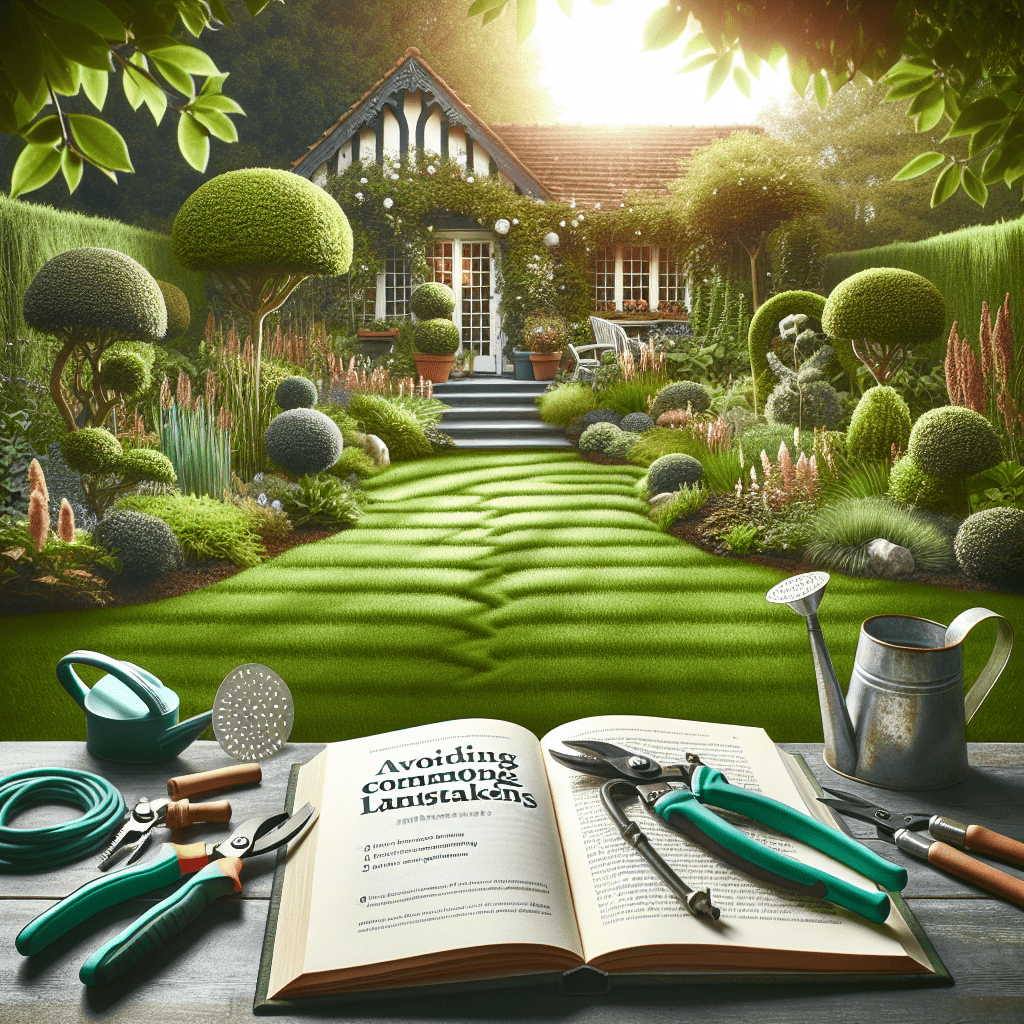Landscaping can be a great way to enhance the beauty and value of your home. However, many homeowners make common mistakes that can detract from the overall appearance of their yard. To help you avoid these pitfalls, we’ve compiled a list of professional advice for creating a flawless yard that you can be proud of.
1. Failure to Plan
One of the most common landscaping mistakes is failing to plan ahead. Before you start any landscaping project, take the time to carefully plan out your vision. Consider the layout of your yard, the types of plants and trees you want to incorporate, and any special features you’d like to include. By creating a detailed plan, you can avoid making costly mistakes and ensure that your yard turns out just the way you want it.
2. Neglecting Maintenance
Maintaining your landscaping is crucial to keeping it looking its best. Many homeowners make the mistake of neglecting regular maintenance tasks, such as watering, weeding, and pruning. By staying on top of these tasks, you can ensure that your yard remains healthy and vibrant year-round.
3. Overcrowding Plants
It can be tempting to pack as many plants as possible into your yard to create a lush, dense look. However, overcrowding plants can actually do more harm than good. Plants need space to grow and thrive, so be sure to give them plenty of room to spread out. This will not only allow your plants to flourish, but it will also prevent overcrowding and the need for constant pruning.
4. Ignoring Light and Soil Conditions
Before choosing plants for your yard, it’s important to consider the light and soil conditions in your area. Some plants thrive in full sun, while others prefer shade. Similarly, certain plants require specific soil conditions to grow properly. By taking these factors into account, you can ensure that your plants will thrive and your landscaping will look its best.
5. Using Too Much Hardscape
While hardscaping elements such as patios, walkways, and retaining walls can add interest to your yard, using too many of these elements can make your landscaping look stark and uninviting. To create a balanced look, be sure to incorporate plenty of softscape elements, such as plants and trees, into your design. This will help soften the hard lines of your hardscape elements and create a more welcoming atmosphere.
6. Neglecting Water Drainage
Poor water drainage can wreak havoc on your landscaping, causing erosion, waterlogged plants, and even structural damage to your home. To prevent these issues, be sure to plan for proper water drainage in your yard. Consider incorporating features such as French drains, rain gardens, and swales to help direct water away from your home and landscaping.
7. Lack of Unity and Cohesion
A common mistake many homeowners make is failing to create a sense of unity and cohesion in their landscaping. To create a cohesive look, be sure to repeat key elements throughout your yard, such as colors, textures, and plant varieties. This will help tie all the elements of your landscaping together and create a unified design that is visually appealing.
Conclusion
By avoiding these common landscaping mistakes and following the professional advice outlined in this article, you can create a flawless yard that you can be proud of. Remember to plan ahead, maintain your landscaping, consider light and soil conditions, strike a balance between hardscape and softscape elements, address water drainage issues, and create unity and cohesion in your design. With a little care and attention to detail, you can create a beautiful and functional outdoor space that you and your family can enjoy for years to come.
FAQs
Q: How often should I water my plants?
A: The frequency of watering your plants will depend on factors such as plant type, soil conditions, and climate. In general, most plants require about 1 inch of water per week, either from rainfall or irrigation. Be sure to water deeply and infrequently to encourage healthy root growth.
Q: How do I know which plants are best for my yard?
A: Before choosing plants for your yard, consider factors such as light and soil conditions, mature size, and maintenance requirements. Consult with a local nursery or landscaping professional for recommendations on plants that are well-suited to your specific yard and climate.
Q: What can I do to improve the curb appeal of my home?
A: To enhance the curb appeal of your home, consider adding elements such as colorful flowers, well-maintained landscaping, a neatly manicured lawn, and clean walkways and driveways. These simple enhancements can make a big impact and create a welcoming first impression.
TIP:
Don’t be afraid to experiment with different landscaping ideas and designs. The beauty of landscaping is that it can be easily changed and adapted to suit your preferences. Take the time to explore various options and find a design that reflects your personal style and enhances the beauty of your home. Happy landscaping!
#Avoiding #Common #Landscaping #Mistakes #Professional #Advice #Flawless #Yard
